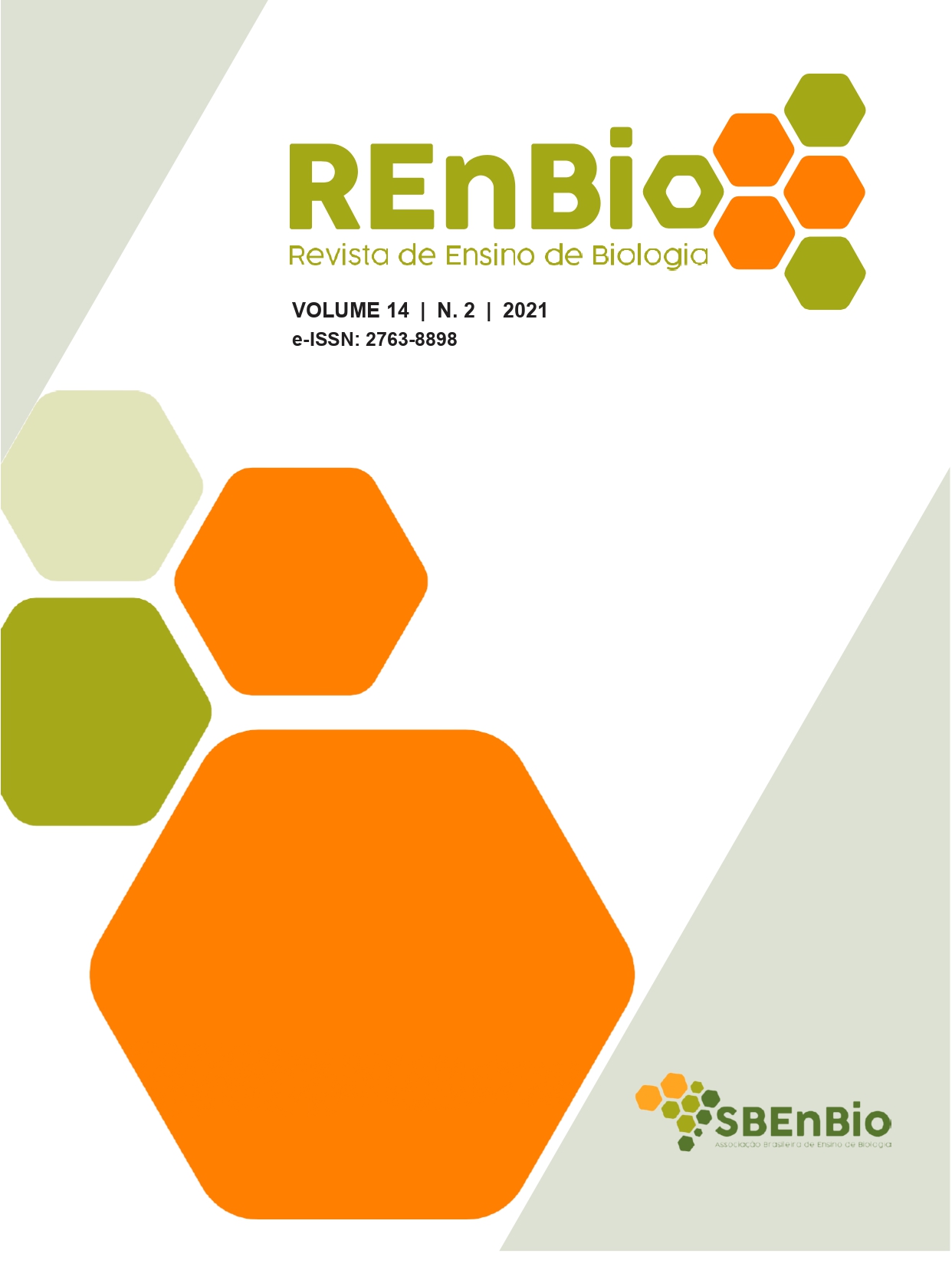Online circuit as proposal teaching of microbiology .
Main Article Content
Abstract
The teaching of microbiology should be considered important in education, as the didactic used directly impacts the learning process. The objective was to contribute with practical and didactic methods in the online teaching of microbiology at a higher education institution in Teresina-PI. This study is exploratory of quali-quantitative approach. Thus, the application of COM used active methodologies (Google-Classroom, Google-Forms, and Kahoot) for interaction. The results presented were meaningful, where 90% of the students said that the activities contributed to the assimilation of the contents. We conclude that the online teaching practical methods used in this study considerably contributed in the learning process of the microbiology contents.
Downloads
Article Details

This work is licensed under a Creative Commons Attribution-NonCommercial-NoDerivatives 4.0 International License.
Aviso de Direito Autoral Creative Commons
 https://creativecommons.org/licenses/by-nc-nd/4.0/
https://creativecommons.org/licenses/by-nc-nd/4.0/
Autores que publicam nesta revista concordam com os seguintes termos:
- Autores mantém os direitos autorais e concedem à revista o direito de primeira publicação, com o trabalho simultaneamente licenciado sob a Licença Creative Commons Attribution que permite o compartilhamento do trabalho com reconhecimento da autoria e publicação inicial nesta revista.
- Autores têm autorização para assumir contratos adicionais separadamente, para distribuição não-exclusiva da versão do trabalho publicada nesta revista (ex.: publicar em repositório institucional ou como capítulo de livro), com reconhecimento de autoria e publicação inicial nesta revista.
- Autores têm permissão e são estimulados a publicar e distribuir seu trabalho online (ex.: em repositórios institucionais ou na sua página pessoal) a qualquer ponto antes ou durante o processo editorial, já que isso pode gerar alterações produtivas, bem como aumentar o impacto e a citação do trabalho publicado (Veja O Efeito do Acesso Livre).
References
AZEVEDO, T. M.; SODRÉ, L. Conhecimento de estudantes da educação básica sobre bactérias: saber científico e concepções alternativas. Revista de Educação, Ciências e Matemática. v. 4, n. 2. 2014.
BRASIL. Ministério da Educação. Conselho Nacional de Educação. Conselho Pleno. Parecer CNE/CP nº 5/2020. Brasília, 2020. Disponível em: http://portal.mec.gov.br/index.php?option=com_docman&view=download&alias=147041- pcp009 - 20&category_slug=junho - 2020- pdf&Itemid=30192 . Acesso em: 12 set. 2020.
BERNARDI, G.; LEONARDI, A. F.; SILVEIRA, M. S.; FERREIRA, S. A.; GOLDSCHMIDT, A. I. Concepções prévias dos alunos dos anos iniciais sobre microrganismos. Revista Ciências e Ideias. v. 10, n. 01. 2019.
GIL, A. C. Como elaborar projetos de pesquisa. 4.ed. São Paulo: Atlas, 2002.
KAHOOT. What is Kahoot. Disponível em: https://kahoot.com/what-is-kahoot/ Acesso em: 25 de jul. 2021.
MASCARENHAS, M. J. O.; SILVA, V. C.; MARTINS, P. R. P.; FRAGA, E. C.; BARROS, M. C. Estratégias metodológicas para o ensino de genética em escola pública. Pesquisa em Foco. v. 21, n. 2, p. 05-24. São Luís, 2016.
MERAZZI, D. W.; OAIGEN, E. R. Atividades práticas em ciências no cotidiano: valorizando os conhecimentos prévios na educação de jovens e adultos. Experiências em Ensino de Ciências, Cuiabá, v. 3, n. 1, p. 65-74, 2008.
NOORIMOTLAGH, Zahra et al. A systematic review of emerging human coronavirus (SARS-CoV-2) outbreak: focus on disinfection methods, environmental survival, and control and prevention strategies. Environmental Science and Pollution Research, v.1, n.1, p. 1-15, 2020
OMS. OPAS Brasil. Folha informativa - COVID-9 (doença causada pelo novo coronavírus). Disponível em: https://www.paho.org/bra/index.php?option=com_content&view=arti cle&id=6101:covid19&Ite mid=875#historico Acesso em: 28 ago. 2021.
PRADO, I. A.C.; TEODORO, G. R.; KHPURI, S. Metodologia de ensino de microbiologia para ensino fundamental e médio. ENCONTRO LATINO-AMERICANO DE INICIAÇÃO CIENTÍFICA, 8., ENCONTRO LATINO-AMERICANO DE PÓS-GRADUAÇÃO - UNIVERSIDADE DO VALE DO PARAÍBA, 4. Anais...Disponível: http://www.inicepg.univap.br/cd/INIC_2004/trabalhos/inic/pdf/IC2-11.pdf . Acessado em: 20 mar. 2020.
SARMENTO, E. C.; VERAS, D. S.; ANDRADE, M. V. M. Educação ambiental para reduzir impactos no riacho Lamego: ações na escola Arlindo Fernandes de Oliveira, residencial Eugênio Coutinho. Revista Educação Ambiental em Ação, n. 59: p.2667. 2017.
SCHEID, N. M. J.; FERRARI, N.; DELIZOICOV, D. Concepções sobre a natureza da ciência num curso de ciências biológicas: Imagens que dificultam a educação científica. Investigações em Ensino de Ciências. v. 12, n. 02, p. 157-181. 2007.
WANG, A. I. The wear out effect of a game-based student response system. Computers and education. v. 82, p. 217-227, 2015.

